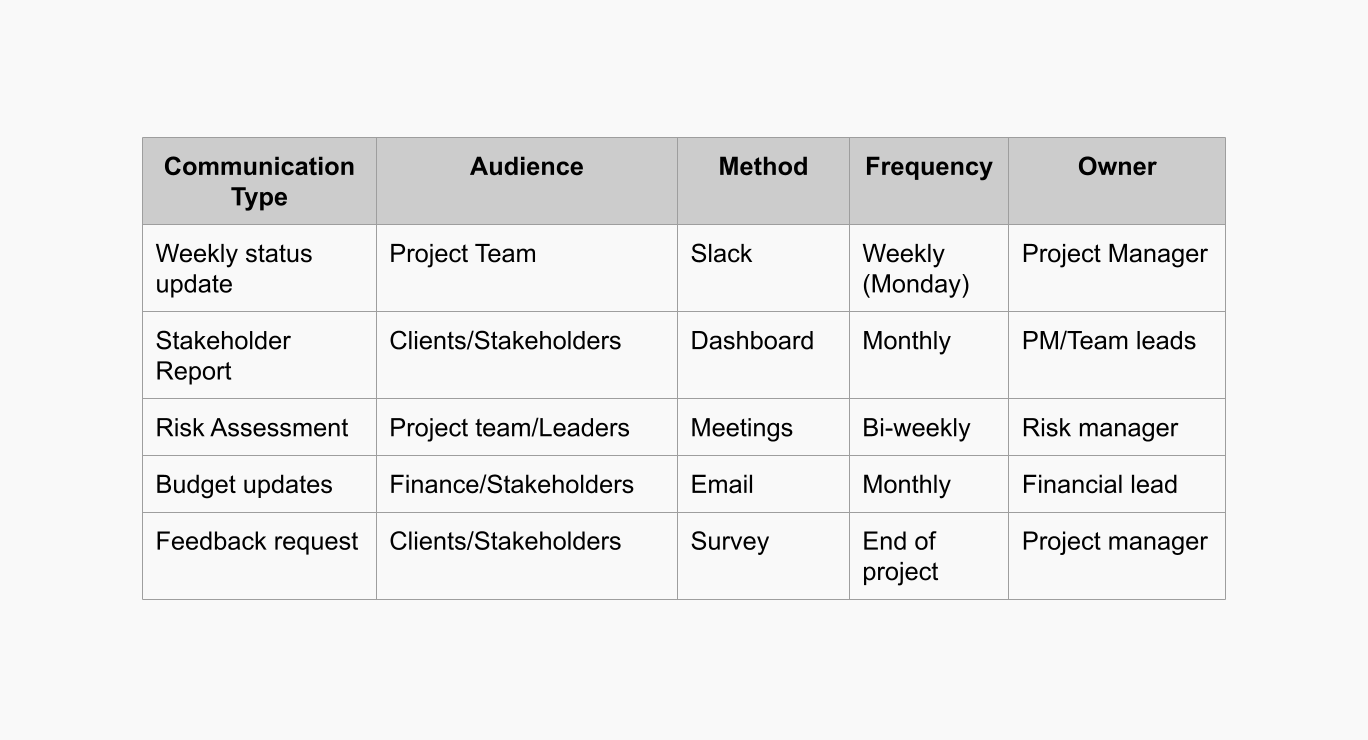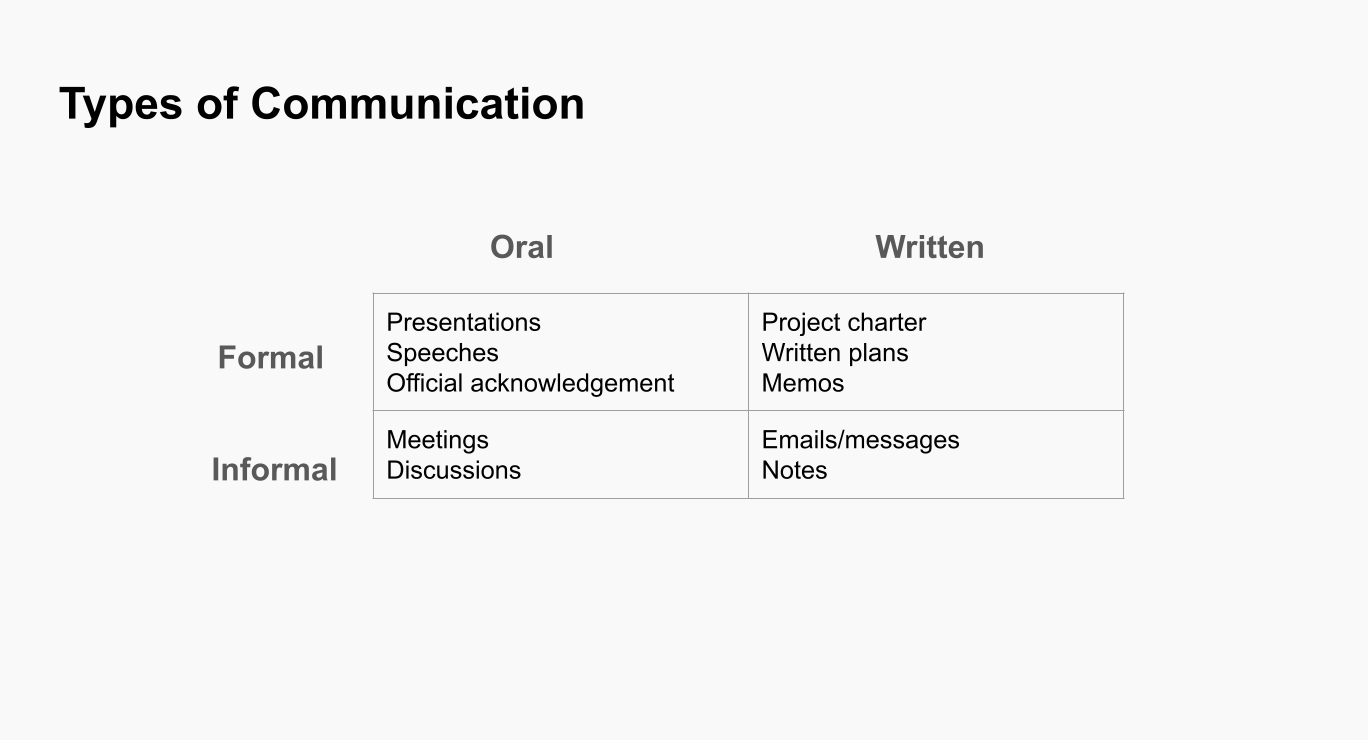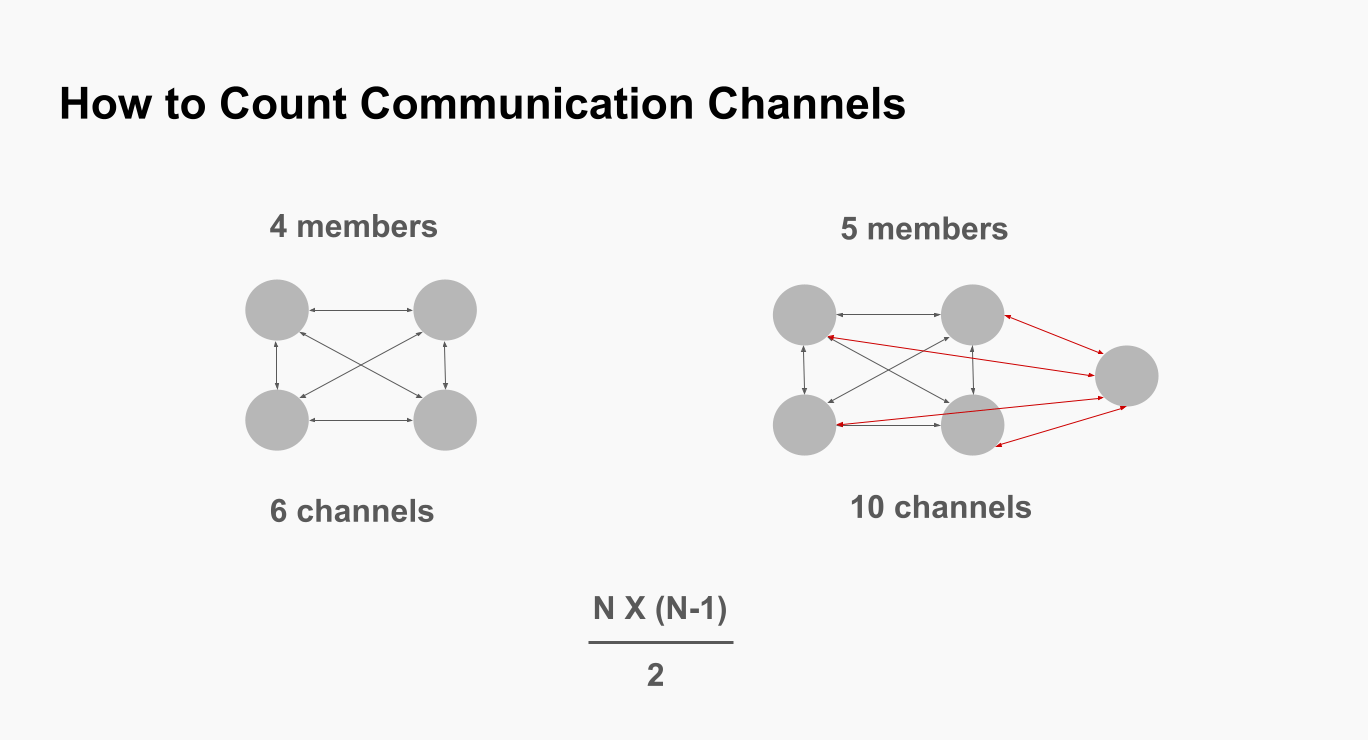Mastering Team Communication: Communication Matrix and Other Key Tools
October 22, 2024 · 10 min read
When it comes to managing a team, communication is key. Did you know that project managers spend up to 90% of their time communicating? Whether it's about project updates, clarifications, or simply ensuring everyone’s on the same page, effective communication makes the difference between project success and disaster.
Why Team Communication is So Important
Team communication isn’t just about sending emails or making announcements. It’s about ensuring everyone gets the right information at the right time. This helps to keep the project moving forward smoothly. Good communication ensures tasks are handed off correctly between team members and departments, preventing confusion, delays, and errors.
Whether you’re working on a small or large project, communication strategies can vary. On big projects with distributed teams, formal communication plans are crucial, and you'll likely find yourself using a communication matrix to track who needs to know what and when. For smaller teams, it's often simpler—fewer people mean easier flow of information, but that doesn't mean you should leave it to chance. Always have a strategy in place.
Key Elements of an Effective Communication Strategy
An effective communication strategy isn’t a one-size-fits-all solution. It should be tailored to the specific needs of your team or project. However, there are some core components that every communication strategy should include:
- Audience Identification. Understand who needs to receive the information. This could be stakeholders, team members, clients, or external partners. Tailoring your message to the audience is crucial for engagement and comprehension.
- Purpose. Every communication should have a clear objective. Are you informing, requesting feedback, resolving an issue, or providing an update? Knowing the purpose will guide the tone and content of your communication.
- Message Delivery Method. Choose the right channel to deliver your message. Some communications are best suited for email, while others might require a meeting, a phone call, or even a quick chat. Formal updates may need written communication, while brainstorming sessions might benefit from more interactive methods.
- Timing and Frequency. Decide how often you will communicate and when. Regular updates might be required weekly, while project milestones may call for a more formal communication schedule. Timing also includes the urgency of the message—some things are best communicated immediately, while others can wait until a scheduled meeting.
- Feedback Mechanisms. Communication should be a two-way street. Ensure there are ways for your team to ask questions, provide feedback, and discuss concerns. Interactive communication, where both sender and receiver engage, helps clear up any ambiguity and strengthens understanding.
- Tone and Style. The way you communicate can set the tone for your team’s morale and engagement. A positive, clear, and inclusive communication style fosters collaboration and encourages active participation. Be mindful of how your message is framed.
Types of Communication in Strategy
When building a communication strategy, it’s important to consider the types of communication that will be most effective. These generally fall into three categories:
- Push Communication. Information is sent to stakeholders without expecting an immediate response, such as emails or newsletters.
- Pull Communication. Information is available for stakeholders to retrieve at their convenience, like posting updates on a shared platform (e.g., a project management tool or intranet).
- Interactive Communication. A two-way exchange where both parties are engaged in real-time communication, such as meetings, video calls, or chat discussions.
Depending on the scenario, a good communication strategy will likely involve a mix of these types.
Communication Matrix
A communication matrix is a helpful tool for visualizing the who, what, when, and how of your communication plan. It breaks down the different types of communication, who is responsible, and when it will happen. Here’s a simple communication matrix template:
For large teams or projects, it’s super helpful to create such a communication plan. This formal document outlines who communicates what to whom and when. It’s a lifesaver when coordinating across departments or locations and ensures that no one is left out of the loop.
Most Popular Team Communication Techniques in Project Management
Keeping teams aligned, ensuring top management is informed, and maintaining client satisfaction requires a strategic approach to communication. Below are some of the most popular communication techniques:
- Daily Stand-ups. Quick, daily check-ins where team members share their progress, plans, and any blockers. This agile practice helps maintain alignment and identifies issues early.
- Kick-off Meetings. Essential at the start of any project to align the team on objectives, roles, timelines, and expectations. Kick-off meetings set the tone for collaboration and ensure that everyone is on the same page.
- Regular Check-ins or Status Updates. Weekly or bi-weekly team meetings help track progress, address issues, and realign tasks as needed. They keep the team informed and motivated throughout the project.
- Cross-functional Communication Plans. For projects involving multiple departments, a cross-functional plan ensures that information flows seamlessly between teams. It defines who is responsible for communicating key updates and mitigates the risk of miscommunication.
- One-on-One Meetings. Personalized meetings between managers and individual team members allow for feedback, addressing concerns, and providing guidance on specific tasks. It helps improve individual performance and morale.
- Milestone-based Reports. Reports that detail progress at key project milestones ensure that team members understand what has been achieved and what remains to be done. They help maintain focus on the most critical deliverables.
- Retrospectives. At the end of a project sprint or phase, retrospectives allow the team to reflect on what went well, what didn’t, and what could be improved. This continuous improvement process strengthens team collaboration, identifies opportunities for optimization, and helps avoid repeated mistakes.
Best Team Communication Tools to Enhance Your Strategy
The right tools can make communication more efficient and streamlined. Here are some tools to consider integrating into your strategy:
- Slack or Microsoft Teams for real-time collaboration and quick discussions;
- Trello or Jira (+Planyway addon) for tracking tasks and ensuring transparency in project progress;
- Zoom or Google Meet for video conferencing, particularly useful for remote teams;
- Email for formal communication and sending detailed reports or updates;
- Survey tools like Google Forms or SurveyMonkey for gathering feedback from stakeholders.
Types of Communication Channels
Communication channels are the various methods and mediums used to convey messages between individuals, teams, or organizations. These channels are the pathways through which information flows, and choosing the right one can significantly impact the clarity, efficiency, and success of communication. There are four types of communication channels:

- Oral Communication Channels. These include face-to-face conversations, phone calls, and virtual meetings. Oral channels are great for real-time discussions, quick decision-making, and building rapport. However, they can sometimes lead to misunderstandings if key details are forgotten or not documented.
- Written Communication Channels. This category covers emails, reports, memos, and text messages. Written communication provides a permanent record of the conversation and ensures that complex information is documented. However, it can sometimes lack the immediacy of oral communication, leading to delayed responses.
- Visual Communication Channels. Visual elements like charts, graphs, slides, and videos convey complex information in a digestible format. Visual aids are especially helpful when explaining data, processes, or concepts that are hard to describe with words alone.
- Digital Communication Channels. These include tools like Slack, Microsoft Teams, and project management platforms such as Trello or Jira. Digital channels streamline communication, making it easy to share information, track progress, and collaborate in real time, especially for remote teams.
Controlling Communication Chaos
Adding more people to a project often feels like a good idea, but there’s a catch. More people mean more communication channels, and that can slow things down. In fact, studies show that as team size grows, communication becomes more complex. To manage this, aim for small teams (5-7 people) for smoother communication flow.
Want to calculate how many communication channels your team has? Use this formula:
N×(N−1)/2
Where N is the number of team members. You’ll be amazed at how quickly the channels multiply!
Tips and Tricks for Effective Team Communication
Effective team communication is key to maintaining collaboration, productivity, and overall team morale. Here are some essential tips and tricks to ensure smooth communication and stronger relationships within your team:
- The Power of Active Listening. Active listening is one of the most underrated skills in team communication. It goes beyond just hearing what someone says; it's about truly understanding their message, asking clarifying questions, and making sure no details are lost. By practicing active listening, team members feel valued and understood, which boosts morale and promotes open, honest communication. This, in turn, improves team collaboration and reduces misunderstandings.
- Set Clear Expectations. Clearly communicate what’s expected of each team member, especially around project updates, deadlines, and responsibilities. This reduces ambiguity and ensures everyone knows their role.
- Host Regular Meetings. Weekly or bi-weekly meetings ensure that the entire team is aligned. These meetings help provide clarity on tasks, address roadblocks, and reinforce team cohesion.
- Celebrate Successes and Encourage Feedback. Communication isn't just for solving problems; it’s also about celebrating wins, no matter how small. Acknowledging milestones and achievements within the team boosts morale and encourages further collaboration. It creates a positive atmosphere where team members feel appreciated.
Final Thoughts: Keep It Simple, Keep It Clear
Good communication doesn’t have to be complicated. Whether you’re using oral communication in a meeting or writing a detailed report, clarity is key. Focus on being full, clear, and concise, and your team will stay aligned, productive, and successful.
Communication is more than just exchanging information; it’s about building trust, fostering collaboration, and driving your project forward. With these tools, tips, and strategies, you’ll be able to master the art of team communication and lead your projects to success!
About the Author
Violetta Chernobuk is a skilled content strategist and writer at Planyway, specializing in crafting insightful and engaging articles on productivity and project management. With her keen eye for detail and a deep understanding of user needs, Violetta ensures that every piece of content is both informative and inspiring, helping readers optimize their workflows and stay ahead in their projects.


